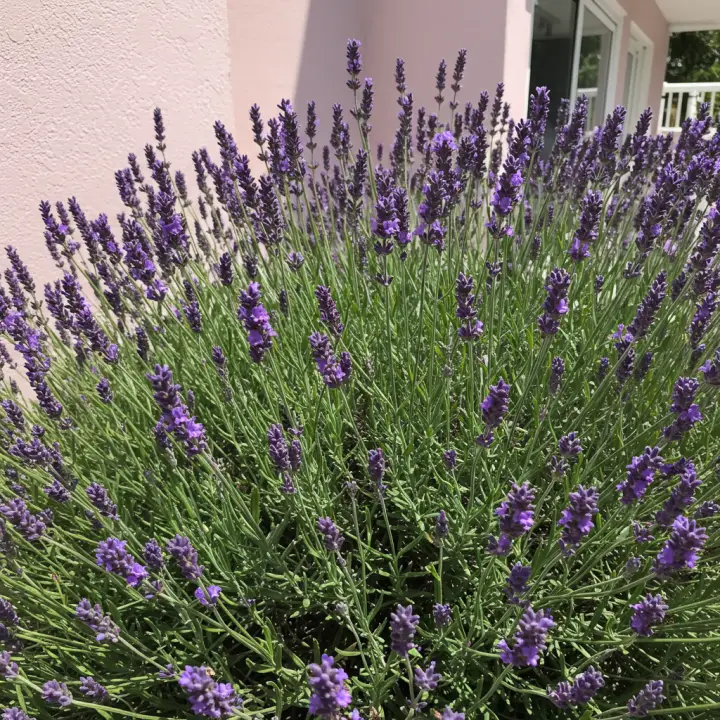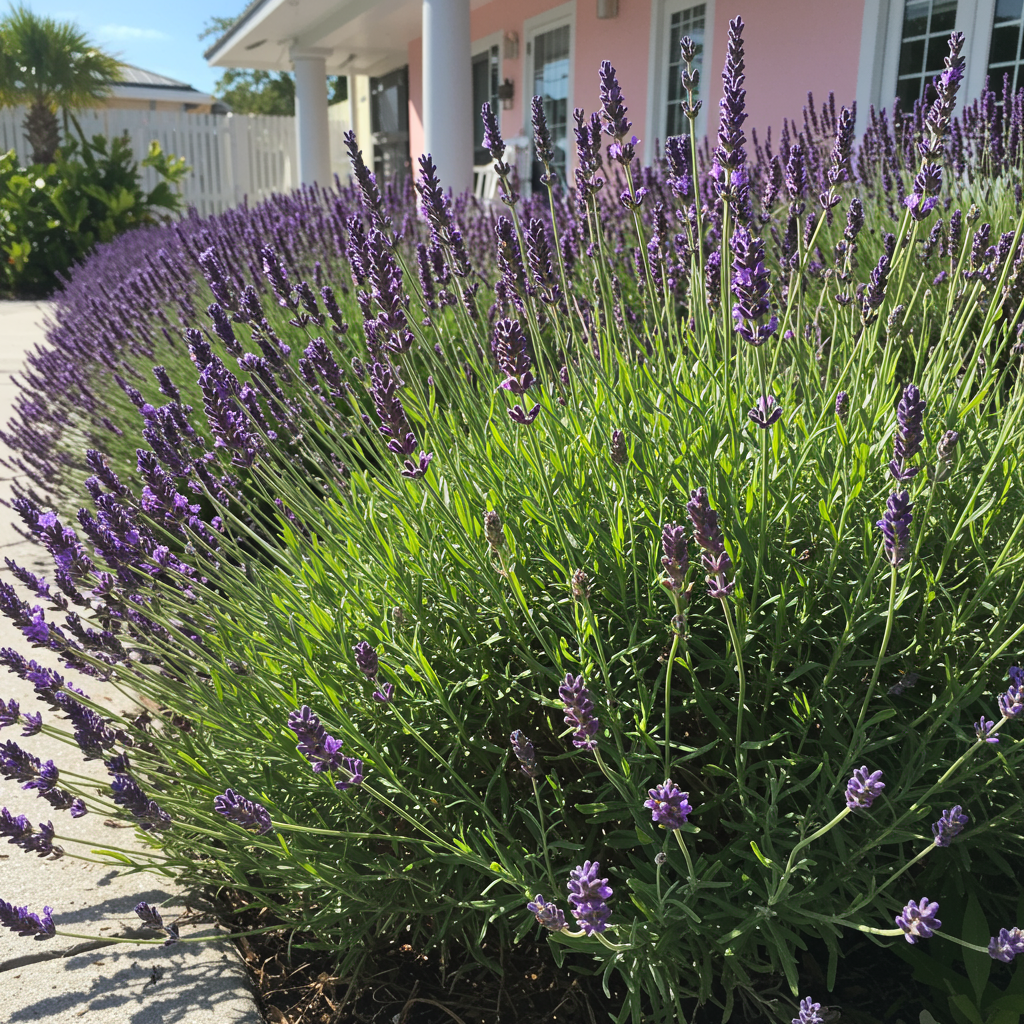Growing lavender in South Florida might seem like a dream given its tropical heat and humidity, but it’s entirely possible with the right approach. This guide identifies the best lavender plant for South Florida climates, focusing on heat-tolerant varieties like Spanish and French lavender, along with essential care tips for successful cultivation. You’ll learn how to choose the right plant, prepare your soil, and provide the care needed for these stunning, fragrant additions to your South Florida garden.

Introduction: The Allure of Lavender in the Sunshine State
The thought of lush, fragrant lavender fields often conjures images of Provence, not the steamy tropics of South Florida. Traditional lavender varieties, like English lavender, indeed struggle in our unique climate. The combination of intense heat, high humidity, and frequent downpours can be a death sentence for plants that thrive in drier, cooler Mediterranean conditions.
However, the dream of having lavender’s beautiful blooms and calming scent in your South Florida garden doesn’t have to remain a dream. With careful selection of heat-tolerant species and an understanding of their specific needs, you can absolutely enjoy this stunning plant. This guide will help you navigate the options and provide the essential tips to make your lavender thrive.
Understanding South Florida’s Climate: Challenges for Traditional Lavender
Before diving into specific varieties, it’s crucial to understand why South Florida’s climate poses a unique challenge for most lavender.
Intense Heat: Long periods of high temperatures (often above 85°F/30°C) stress many lavender types.
High Humidity: Constant moisture in the air encourages fungal diseases like root rot, which lavender is highly susceptible to.
Sandy, Alkaline Soil: While lavender prefers alkaline soil, Florida’s sandy soils often lack the excellent drainage required. Heavy rain can quickly lead to waterlogged roots.
Seasonal Deluges: The wet season brings torrential downpours that can drown plants not adequately protected or planted in well-draining conditions.
These factors mean that a true “Mediterranean” lavender will likely fail. We need something tougher, more accustomed to the heat and capable of handling some humidity, provided its roots stay dry.
Top Contenders: The Best Lavender Varieties for South Florida
When searching for the best lavender plant for South Florida, your focus should shift from traditional English lavender to varieties known for their heat tolerance and resilience.
Spanish Lavender (Lavandula stoechas)
Often considered a top choice for warmer climates, Spanish lavender is visually distinct with its “bunny ear” bracts atop the flower spikes.
Why it works: It’s more tolerant of heat and humidity than English lavender and can handle slightly more moisture, provided drainage is impeccable. It’s known for its long blooming period.
Key Characteristics: Compact growth, often smaller than other varieties, with gray-green foliage. Flowers typically purple, but pink and white cultivars exist.
Recommended Cultivars: ‘Anouk’, ‘Fairy Wings Spanish Lavender’, and ‘Otto Quast’ are often cited for their vigor.
French Lavender (Lavandula dentata)
Another excellent candidate, French lavender is known for its serrated (toothed) leaves and a slightly milder fragrance compared to its English cousins.
Why it works: It’s highly tolerant of heat and humidity, making it a strong contender for South Florida. It can also bloom almost year-round in ideal conditions.
Key Characteristics: Bushier growth habit, silvery-green, toothed leaves. Flowers are typically pale purple.
Recommended Cultivars: ‘Goodwin Creek Grey’ is a popular and very resilient hybrid of L. dentata that performs exceptionally well in warm, humid climates. Its strong fragrance and long bloom time make it a garden favorite.
Lavandula x heterophylla ‘Sweet Lavender’
This is a lesser-known but surprisingly good performer in warmer climates. It’s a hybrid, prized for its vigorous growth and sweet fragrance.
Why it works: ‘Sweet Lavender’ is recognized for its robust nature and ability to withstand heat better than many other true lavenders, offering a continuous supply of aromatic flowers.
Key Characteristics: Tall, airy growth habit with long, slender flower spikes. Distinctive sweet, camphor-like scent.
Essential Care Tips for Growing Lavender in South Florida
Even with the right variety, successful lavender cultivation in South Florida hinges on meticulous care.
Soil Preparation is Key
This is arguably the most critical factor. Lavender hates wet feet.
Drainage: Amend native soil heavily with perlite, coarse sand, or small gravel to ensure rapid drainage. Raised beds or containers are highly recommended to provide ultimate control over soil conditions.
pH Level: Lavender prefers slightly alkaline soil (pH 6.5-7.5). Florida soils tend to be acidic, so you might need to add agricultural lime or dolomitic lime to raise the pH if necessary. A simple soil test will confirm this.
Avoid Rich Soil: Lavender thrives in lean, poor soil, so avoid adding compost or potent fertilizers when planting.
Watering Wisely
Deep but Infrequent: Water thoroughly when the top few inches of soil are completely dry. Then, let it dry out again. Overwatering is the quickest way to kill lavender in Florida.
Morning Watering: Water in the morning to allow foliage to dry before nightfall, reducing the risk of fungal issues.
Monitor Container Plants: Containers dry out faster, so check them more frequently, but still allow for dryness between waterings.
Sunlight Requirements
Full Sun: Lavender needs at least 6-8 hours of direct sunlight per day to flower profusely and stay healthy. In South Florida’s intense summer, a spot with morning sun and some very light afternoon shade might be beneficial, but generally, full sun is preferred.
Pruning for Vigor
Regular Trimming: After each flush of blooms, trim back the spent flower stalks and about an inch or two of the foliage. This encourages new growth and further blooming.
Hard Pruning: Once a year, typically in late fall or early spring, give your plant a more substantial prune, removing up to one-third of its growth to maintain shape and prevent woodiness.
Fertilization (or lack thereof)
Minimal Needs: Lavender thrives in lean conditions. Generally, it doesn’t need fertilizer. If your plant looks like it’s struggling, a very light application of a balanced, slow-release granular fertilizer once a year in early spring might help, but avoid nitrogen-heavy feeds which promote leafy growth at the expense of flowers.
Pest and Disease Management
Root Rot: The primary enemy of lavender in South Florida is root rot, caused by overwatering and poor drainage. Ensure proper soil, watering, and air circulation.
Fungal Issues: Powdery mildew can occur in humid conditions. Ensure good air circulation around plants and avoid overhead watering in the evening.
Landscaping with Lavender in South Florida
Integrating lavender into your South Florida garden effectively often involves strategic placement and planting methods.
Container Gardening: This is often the most forgiving method. Using terracotta pots improves drainage. You can also move pots to a sheltered location during heavy rains.
Raised Beds: Creating a raised bed with a custom, fast-draining soil mix is an excellent solution for in-ground planting, lifting the roots above potential waterlogging.
Xeriscaping/Rock Gardens: Lavender is a natural fit for dry, rock gardens, which naturally provide the sharp drainage it loves.
Companion Planting: Plant lavender alongside other drought-tolerant, sun-loving herbs and plants that appreciate similar conditions, such as rosemary, thyme, or succulents.
Frequently Asked Questions (FAQs)
Q1: Can English lavender grow in South Florida?
A: No, generally English lavender (Lavandula angustifolia) is not suitable for South Florida. It requires cooler temperatures and lower humidity to thrive and will most likely perish in our climate.
Q2: How often should I water lavender in South Florida?
A: Water only when the top 2-3 inches of soil are completely dry. This could be anywhere from every few days to once a week, depending on temperature, humidity, and whether it’s in a pot or the ground. Always err on the side of underwatering rather than overwatering.
Q3: What kind of soil does lavender need in Florida?
A: Lavender needs extremely well-draining soil, preferably sandy or gravelly, with a slightly alkaline pH (6.5-7.5). Avoid heavy clay soils. Amend heavily with perlite or coarse sand if planting in native soil. Raised beds are highly recommended.
Q4: Does lavender attract butterflies in Florida?
A: Yes! While the fragrance is often associated with bees, Spanish and French lavenders also attract various butterflies, adding beauty and life to your South Florida garden.
Q5: Where can I buy heat-tolerant lavender plants in South Florida?
A: Look for Spanish or French lavender varieties at local nurseries, especially those specializing in Florida-friendly or drought-tolerant plants. Online specialty nurseries can also be a good source, but ensure they ship viable plants.
Conclusion: Your Fragrant Oasis Awaits
Bringing the captivating beauty and fragrance of lavender to your South Florida garden is a rewarding endeavor. By choosing the best lavender plant for South Florida – specifically heat-tolerant varieties like Spanish lavender (‘Anouk’, ‘Fairy Wings’) or French lavender (‘Goodwin Creek Grey’) – and committing to proper cultivation techniques, you can overcome the challenges of our unique climate. Focus on excellent drainage, wise watering, and ample sunlight, and you’ll be well on your way to enjoying aromatic blooms that thrive even in the Sunshine State. With a little care and the right plant, your South Florida garden can indeed become a fragrant oasis.

